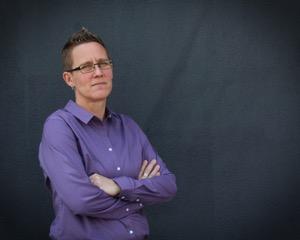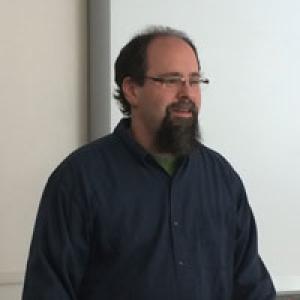Resources

One week after the November 2016 election, the Faculty Senate at Drake University convened. For almost an hour we debated a resolution a small group of faculty had drawn up in the days after voters across the nation chose for their president a man who regularly uses vitriolic and vile language to talk about people of color, immigrants, women, and an array of other marginalized groups. At the end of the debate, we were tired. Not everyone was in full agreement. Some faculty left worried about the implications for Drake as an institution. But, I was proud. Less than a week after the election Drake faculty approved a resolution that our President quickly formally endorsed declaring Drake a “sanctuary institution.” There’s much to be said about the limits and merits of such a resolution. One the one hand, such resolutions don’t legally accomplish all that much for students who are at risk of deportation. As faculty opposed to the resolution pointed out, Drake University has to comply with federal law. On the other hand, setting aside the reality that law is tricky and we have others to appeal to (for example, FERPA might be used to challenge any federal law insisting we release students’ immigration status), one of the most insightful arguments made in support of sanctuary was that such stances now help to proactively frame the terms of public debate through which any such federal directives might be later made. Acting early was important. But, the point of this post isn’t actually about Sanctuary resolutions themselves. It’s to suggest that to the extent to which we see the political times we are living in as raising unique questions about classroom pedagogies, we must recognize these pedagogies as utterly inseparable from faculty activism and institutional organizing. I teach a broad array of courses, but my training is in Christian Social Ethics. I live, write, and teach deeply rooted in liberationist traditions. I believe in education in the terms about which Paulo Freire wrote. I’m an educator because of a profound commitment to humanity. I believe education’s role is to cultivate in students critical consciousness in which they learn to unmask and then challenge the conditions of existence that suppress freedom and flourishing. I believe pedagogy should be designed to enable all involved to more powerfully push back against any systems (material, ideological, confessional) that numb us into conformity with a radically unjust and too-often death-dealing status quo. If there was ever a time in which a nation that conceives of itself as a democracy needed education to do its work, that time is now. For this reason, pedagogy committed to education must happen at the institutional level, and faculty who believe ourselves to be educators must lead the way in such institutional pedagogy. Let me show you why. I had two intellectually gifted, hard-working, female students in one of my classes this year. Both happened to be undocumented. These students had been DACAmented (as they called it) by Obama’s executive order in support of Dreamers. They were both beyond traumatized by the election. They came to class regularly in the spring naming the most recent movements of Immigration and Customs Enforcement (ICE) in Des Moines. Constantly during the semester, I wrestled: What does teaching these students look like right now? What does teaching the non-immigrant students in my classes right now mean? As I know it has meant for many colleagues over the last nine months, it ended up meaning many days of altering “planned content.” It looked like a lot of time engaging the most recent newspaper reports alongside our assigned class reading—making this interrogation the center of our education. We engaged in difficult moral, ethical, and political deliberations; emotions ran strong most days. But it also meant taking activism as a faculty member to a new level. How could I have shown up as an educator in my classroom, a place where the violence of the new administration’s practices put my students well-being at risk in fundamental ways, if I wasn’t involved in pushing Drake as an institution to declare Sanctuary? Without having helped to organize to move this statement through? Without using my institutional power to insist Drake declare solidarity with members of our campus community now living with unspeakable risk? Two weeks ago Nancy Lynne Westfield wrote on this blog about a ritual she performs yearly to remind herself she has “choice and freedom” in an austere and rigid academy that allows –isms of every type to flow. She described her relationship with the academy in these terms: “Challenged to navigate this strange reality and stymied to negotiate with persons who would see us fail, there is little sanctuary for us unless we create it for ourselves.” I can scarcely imagine a time in which it was more clear that those of us who are the most insulated (and I realize that’s not all of who are reading this post)—the white, the tenured, the documented, the physically abled, the men—must become activists. We must act to create and extend “sanctuary” in a myriad of ways, and by insisting our institutions do the same. Accomplishing this requires engaging institutional work faculty often don’t or don’t think we know how to do. But we can learn and we can do. Drake’s “Sanctuary” resolution didn’t happen without strategizing, phone calls, making arguments, putting political capital on the line, without organizing. In the months and years to come, we must come to recognize such action as institutional pedagogy and take it every bit as seriously as we take the classroom pedagogies we need to create to teach the students in our classrooms.

Over the past several weeks, we have seen over and over again violence against people, mostly women of color, presumed to be Muslim. The attackers have been white men who targeted their victims based on the victim’s presumed religion. Some of the increase in these hate crimes can be attributed to a rise in anti-Muslim rhetoric from political leaders which emboldens those with xenophobic views to be more public. However, the lack of a large public outcry against such crimes comes from long held racist assumptions rooted in Orientalism about Muslims which are reinforced by the media, popular culture, government narratives, and, too often, by some non-Muslim religious narratives. The question for any religious studies teacher in these times has to be: what can I do to help counter these assumptions, attitudes, and false narratives? Taking such a question seriously is not without risk, but teaching about religion is not a politically neutral endeavor. Talking about religion, teaching about religion, is political. My entire teaching career has been motivated by how narratives create our reality. This is not something new. After all, bell hooks, Edward Said, Stuart Hall, Paul Ricoeur, Judith Plaskow, Dwight Hopkins, Sheila Davaney, and many, many others have pressed for decades about representation and the creation of narratives. However, in our current cultural and political climate I often find myself pausing to consider the narrative, or better, the counter-narrative that needs to be told. Our assumptions about other people are shaped by the information we possess. In many instances, the information we possess is limited at best and ill-informed at worst. This understanding informs how I think about teaching religion. When teaching my “Introduction to Religious Studies” classes I have two goals in mind. First, I want to raise the students’ awareness of the relationships between religion and politics. Religious language is used to justify violence by non-state groups who claim religious identities. Religious language is also used to justify laws and policies about abortion, the death penalty, military strikes, violence, human rights, women’s rights, LBGTQ rights, etc., etc. Second, I hope to raise the level of students’ religious literacy. If our assumptions about other people are shaped by our knowledge, then introducing students to the commonly held beliefs and narratives of various religious communities should result in students having a better understanding about others. When I teach religious studies courses I use a human centered approach. As often as possible, I try to expose students to different practitioners within and among religious traditions. The challenge is always finding the balance between giving students general information about religious beliefs without generalizing and essentializing an entire tradition based on the beliefs of individual practitioners. The larger point is to humanize religious beliefs and practices. When students hear the stories of others, students find ways to connect with folks on a human level. Making a human connection then allows for a different kind of conversation about the interplay between religion and politics. The stereotypes and ill-informed assumptions start to be replaced by new knowledge. As students begin to think differently about human beings and the practices of religion, they also begin to ask critical questions. One of the questions students often ask is about the media’s and popular culture’s engagement with religion. Many students notice that religion is mostly presented as conservative, damaging, and/or violent with very little attention given to religious people who are working to create positive social change rooted in justice. It is during these moments that I am able to introduce to students groups and individuals who might be labeled “prophetic activists.” The idea of prophetic activism is as old as religion itself, but the term as I am using it comes from Helene Slessarev-Jamir. Slessarey-Jamir defines prophetic activism as “religion [that] is being used to frame progressive politics that prophetically calls for justice, peace, and the healing of the world.”[1] Some of the groups I tend to introduce in class include: Jewish Voices for Peace, SpiritHouse Project, Christian Peacemaker Teams, Muslim Advocates, and Four Winds American Indian Council. For example, Jewish Voices for Peace has consistently spoken out against anti-Muslim hate, be it a Chanukah ceremony to overcome racism and Islamaphobia or showing up at airport protest against the “Muslim Travel Ban.” It is prophetic activist groups such as Jewish Voices for Peace that help provide a counter-narrative of justice and nonviolent social change rooted in religion. I started out asking how religious studies teachers can help counter the racist and xenophobic assumptions, attitudes, and narratives that lead to violence and/or silence. My suggestions include a human-centered approach to teaching religion, to make the connections between religion and politics overt, and to provide counter-narratives that are rooted in justice and nonviolent social change. Most importantly, I think it is up to those of us who teach about religion to provide opportunities to change, confront assumptions, and to call out violence done in the name of religion or because of religion. [1] Helene Slessarev-Jamir, Prophetic Activism: Progressive Religious Justice Movements in Contemporary America (New York: New York University Press, 2011), 4.